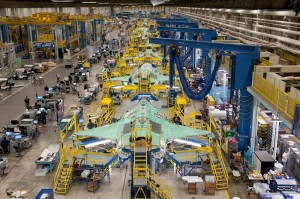The Iraqi Air Force has some sweet new fighter jets built right here in Fort Worth, and boy are they excited about them.
And why not? After spending a decade trying to shoot down American planes, the country’s air force was completely destroyed in 2003 at the start of the U.S. invasion.
Almost 10 years later, they’re an ally, so it’s no big deal that they get three dozen of one of most advanced fighter jets ever designed, right?
Well, except that the U.S. government’s willingness to hand over advanced weaponry to unstable countries, especially in the Middle East, doesn’t always result in the intended dividends of peaceful friendship.
As the International Business Times reports:
Critics looking for ways that the Iraqi deal could backfire need only look next door in Iran, where in the 1970s the U.S. supplied advanced jets to the Shah’s pro-American regime, only to see it toppled in 1979 by an Islamic revolution.
That upheaval left more than 70 F-14 Tomcat fighters, at the time the best that the West could offer, in the hands of a now-hostile state. It’s not far-fetched to imagine that, if Iraq were one day to fall into the hands of a government not friendly to the West, its F-16s would become a serious headache for any adversaries.
As the Fort Worth Weekly reported in a cover story this summer on the continuing problems and escalating costs of Lockheed’s shiny new F-35, this isn’t a new problem.
Nobody builds jets as good as the U.S., but Lockheed Martin’s lobbying power ensures that politicians agree to allow the company to sell those planes to other countries also — ensuring more profits for the defense contractor and a great argument for paying them even more money to design and build a more advanced plane, like the F-35, for example.
As one writer said in the Weekly’s June story, “It’s a little bit like an arms race with ourselves.”
American-made weapons, most notably tear gas, were sold to the Egyptian military under the rule of tyrant Hosni Mubarek and then used against protesting civilians during last year’s Arab Spring revolution. Egypt also has more than a dozen F-16s, still the main workhorse of the U.S. Air Force as well.
And in Iraq, political leaders are currently facing accusations that they’ve been allowing Iran to deliver weapons to another tyrant, Syria’s President Bashar al-Assad. Bombings by insurgents, though down from a peak in 2006 and 2008, remain common.
More importantly, the U.S. military actually had less advanced air planes laying around unused at a base in Arizona. Instead of F-16s, Iraqis could have gotten those planes instead.
But as the International Business Times story points out: “That would not have kept the F-16 assembly line open until 2015, as the current deal instead does. And that would have been a setback for Lockheed Martin, which, according to opensecrets.org, spent $15 million in 2011 alone for lobbying in Washington.”
Iraq gets its first F-16s in two years.













“Defense” spending. Corporate welfare pigs at the trough. You do realize most of the money Iraq is spending on this is ours, right?
Like the war on drugs, this is basically an employment program disguised as national security.
“Employment program”? the US armed forces may indeed be the biggest, most expensive per head, maybe most successful welfare / job training program ever to exist (how else to you explain 2 million “volunteers”?), but it is stockholders, executives, and lobbyists that are doing the real work of getting the business and banking the returns. The CEO of Lock-Mart makes twice as much money as the CEO of Goldman-Sachs. My friends in the Navy tell me that about half of their time and efforts while deployed are devoted to marketing ITAR weapons to our customers- er, allies. Which helps explain why we have so many foreign military bases that no one can count exactly how many there are – something North of 700, many say 900. I would call the Military-Industrial-Congressional Complex more of a *Milking Program* — now sucking tax dollars at a rate of 1/2 Trillion-a-year, from our great-great-grandchildren.